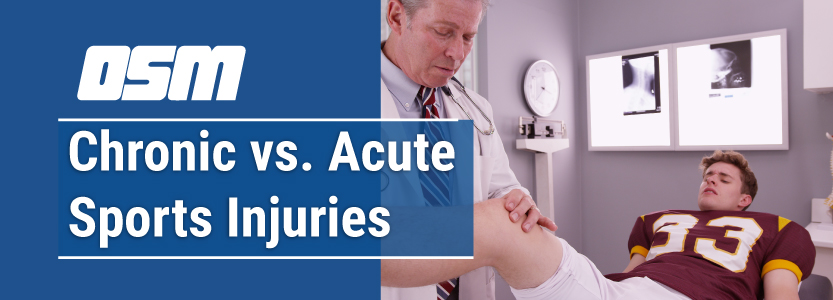Article featured on Summit Orthopedics
You may have heard the terms acute sports injury and chronic sports injury. But what is the difference between acute vs chronic sports injuries?
What is an acute sports injury?
Acute injuries happen in a single moment. In sports, they could be the result of a collision, abnormal twisting, landing wrong after a jump, or some other kind of traumatic injury.
In short, when you experience an acute injury during sports, you’ll know it. You may hear a “pop” or feel a tearing sensation, and it will generally be painful, with swelling, bruising, or deformity after the injury.
How do you diagnose and treat an acute sports injury?
Acute injuries should get evaluated urgently, within a week if not on the day of injury itself. Treatment depends on the severity of the injury, but getting an X-ray and an evaluation right away is always a good idea. When the injury is acute, it’s important to get it treated quickly to make sure it heals properly.
If surgery is needed, we should do it quickly, so the bones and ligaments can be lined up right away. That gives the athlete the best chance of getting back to sports as soon as possible. Planning for a return to sports should be part of an athlete’s discussion with a sports medicine provider after an acute injury.
What about chronic sports injuries?
Many active and athletic people can relate to a long-term, nagging soreness or stiffness in the body whether it’s a baseball pitcher’s aching shoulder or a runner’s sore knees. These are the kinds of symptoms associated with chronic sports injuries.
Chronic injuries happen over time, generally with overuse. They happen when a joint, tendon, or other structure wears out over time. Examples include tendinitis and rotator cuff injuries with microtears that build up over years.
In sports, loading a joint or other structure the wrong way or with too much force for too long can lead to that structure getting too thin and eventually giving out. Our bodies are designed to withstand force, but if an athlete goes above and beyond that force threshold repetitively, it can set the stage for a chronic sports injury.
How are chronic sports injuries treated?
For chronic injuries, time is less of a component, because the injury is long term. With a chronic injury, we can try nonoperative treatments like physical therapy, RICE, and anti-inflammatories. Even if surgery is recommended, it doesn’t have to happen right away.



